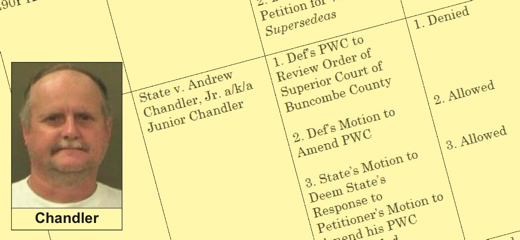Rascals case in brief
In the beginning, in 1989, more than 90 children at the Little Rascals Day Care Center in Edenton, North Carolina, accused a total of 20 adults with 429 instances of sexual abuse over a three-year period. It may have all begun with one parent’s complaint about punishment given her child.
Among the alleged perpetrators: the sheriff and mayor. But prosecutors would charge only Robin Byrum, Darlene Harris, Elizabeth “Betsy” Kelly, Robert “Bob” Kelly, Willard Scott Privott, Shelley Stone and Dawn Wilson – the Edenton 7.
Along with sodomy and beatings, allegations included a baby killed with a handgun, a child being hung upside down from a tree and being set on fire and countless other fantastic incidents involving spaceships, hot air balloons, pirate ships and trained sharks.
By the time prosecutors dropped the last charges in 1997, Little Rascals had become North Carolina’s longest and most costly criminal trial. Prosecutors kept defendants jailed in hopes at least one would turn against their supposed co-conspirators. Remarkably, none did. Another shameful record: Five defendants had to wait longer to face their accusers in court than anyone else in North Carolina history.
Between 1991 and 1997, Ofra Bikel produced three extraordinary episodes on the Little Rascals case for the PBS series “Frontline.” Although “Innocence Lost” did not deter prosecutors, it exposed their tactics and fostered nationwide skepticism and dismay.
With each passing year, the absurdity of the Little Rascals charges has become more obvious. But no admission of error has ever come from prosecutors, police, interviewers or parents. This site is devoted to the issues raised by this case.
On Facebook
Click for earlier Facebook posts archived on this site
Click to go to
Today’s random selection from the Little Rascals Day Care archives….
Click for earlier Facebook posts archived on this site
Click to go to
Today’s random selection from the Little Rascals Day Care archives….
N.C. justices to Junior Chandler: Drop dead
 Oct. 5, 2012
Oct. 5, 2012
Because today’s North Carolina Supreme Court decision on Junior Chandler’s appeal comprised three separate parts, I didn’t fully comprehend it.
“Is this good news or bad?” I emailed Mark Montgomery, Junior’s appellate lawyer.
“The worst,” he replied. “We’re out of court.”
Yes, this is the worst – the absolute, inexcusable, shameful worst.
The justices have denied Junior Chandler, probably the last still-imprisoned victim of the multiple-offender, multiple-victim ritual-abuse day-care panic, his final chance for a new trial. After 25 years behind bars – more than all the Little Rascals defendants combined! – he faces only more of the same.
If I were a lawyer, maybe I could understand how the North Carolina Supreme Court arrived at its decision.
How it was unmoved by Junior’s feeble representation early on.
How it was uninterested in the epochal progress made in limiting expert testimony.
How it was all too eager to find petty justifications for validating a prosecution rotten at the core.
But probably not.
‘Ritual abuse’ prosecution as stepping stone?
 Dec. 15, 2013
Dec. 15, 2013
“….Rumor has it that people are urging former District Attorney Nancy Lamb to run against Republican (State) Rep. Bob Steinberg in Northeastern North Carolina….
“In Steinberg’s district, Democrats hold a 14% advantage over Republicans and unaffiliated voters hold a 4 point margin over the GOP.”
– From “Here Come the Women” by Thomas Mills at PoliticsNC (Dec. 5)
If the idea of a spectacularly misguided “ritual abuse” prosecutor pursuing a further political career seems unlikely, consider that two of the worst actors in the Fells Acres (Gerald Amirault) case – Scott Harshbarger and Martha Coakley – both went on to election as Massachusetts attorney general.
And Janet Reno, prosecutor of the Country Walk (Frank Fuster) case became U.S. attorney general.
Beware of parents in search of ‘truth’
Feb. 1, 2013
“The Little Rascals case serves as a good reminder that parents also are part of the child-savers interest group and have as much, in fact probably more, of a vested interest in ‘getting to the truth’ than any of their professional associates….
“From the witness stand, one mother describes how her repeated questioning of her three-year-old son finally confirmed that he, too, had been abused by Bob Kelly…
Mother: First time I questioned him, we were laying on my bed and I was just, you know, ‘Do you like Mr. Bob?’ ‘Has Mr. Bob ever done anything bad to you?’ And as we were talking I got more specific…. ‘Has Mr. Bob ever touched your hiney? ‘Has he ever put his finger in your hiney?’
Attorney: Was that the only time you questioned him?
Mother: No, it went on….
Attorney: Now tell me how it developed that you began to get statements from him that raised a question in your mind about sexual abuse.
Mother: (My son) was being questioned a lot from that first time on, quite often. And then that last week it was probably a few hours every day thing…. I got a response from him. Um, he told me that Mr. Bob had put his penis in his mouth and peed on him….
Attorney: How did he come up with those kinds of statements?
Mother: Because I asked him…. He had been hearing it at least once a week since I first started questioning him and then that last week he was hearing it every day.
“In their empirical research on repeated interviewing, Ceci and Bruck (1995) find that while children do remember more with each additional interview, their reports also become more inaccurate over time.
“Simply put, they recall both more accurate and inaccurate details with each successive interview. Further, repeated interviews signal the interviewers’ bias to the children, cueing them on how to answer in a way that pleases their interrogators.”
– From “The Day Care Ritual Abuse Moral Panic” by Mary De Young (2004)
Brent Adams & Associates begins to clean up its act
Nov. 7, 2011
Last week I mentioned a misleading characterization on the website of the Raleigh personal-injury law firm Brent Adams & Associates:
“A highly publicized case occurred in coastal North Carolina almost 30 years ago. Making national headlines, the Little Rascals Day Care Center was run by a husband-and-wife team, Bob and Betsy Kelly…. The Little Rascals abuse case involved 90 children who all required extensive therapy sessions.”
After I asked that the passage be removed, instead this sentence (along with a Wikipedia link) was added:
“The convictions were later overturned by the NC Court of Appeals and all charges were dropped.”
Better. A lot better. But the remaining reference to “90 children who all required extensive therapy sessions” is still exactly 90 children away from being accurate.











0 CommentsComment on Facebook